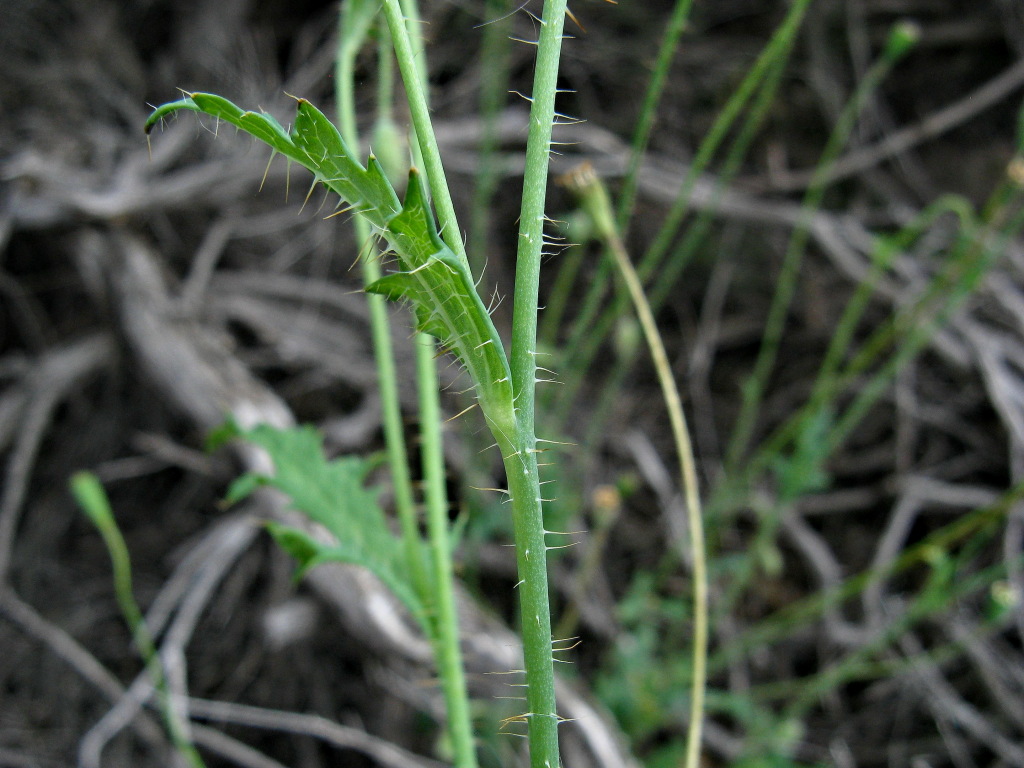Papaver
Annual, biennial, or perennial, caulescent or scapose, taprooted herbs; sap white, orange, or red; stems leafy. Basal leaves rosulate, petiolate; cauline leaves alternate, the lower petiolate, the upper subsessile or sessile, sometimes amplexicaul; blades 1–3-pinnately lobed or dissected, margin usually toothed, scalloped, or incised. Inflorescence a cyme with flowers in 1s, 2s or 3s on long peduncles or scapes, bracteate; buds nodding or (not in Australia) erect; sepals 2, distinct, usually caducous; petals 4, rarely 6, obovate, often caducous; ovary 1-locular, style absent, stigmas 3–18, radiating on a sessile, ± lobed disc, velvety. Capsules erect, subglobose to subcylindric, incompletely multilocular by placental intrusion, dehiscing via 3–18 pores or short valves beneath the persistent or (not in Australia) deciduous stigmatic disc; seeds many, minutely pitted, aril absent.
About 80 species native mainly in temperate and arctic North America and Eurasia, also in northern and southern Africa; 6 species introduced in Australia.
Papaver is rich in alkaloids, notably opiates. Some species are diploids, others are polyploids, and some apparently are aneuploid. Most commonly, n = 6 or 7 or a multiple of these.
Kiger, R.W. (1996). Papaver. In: Walsh, N.G.; Entwisle, T.J., Flora of Victoria Vol. 3, Dicotyledons Winteraceae to Myrtaceae, pp. 69–72. Inkata Press, Melbourne.
 Spinning
Spinning



